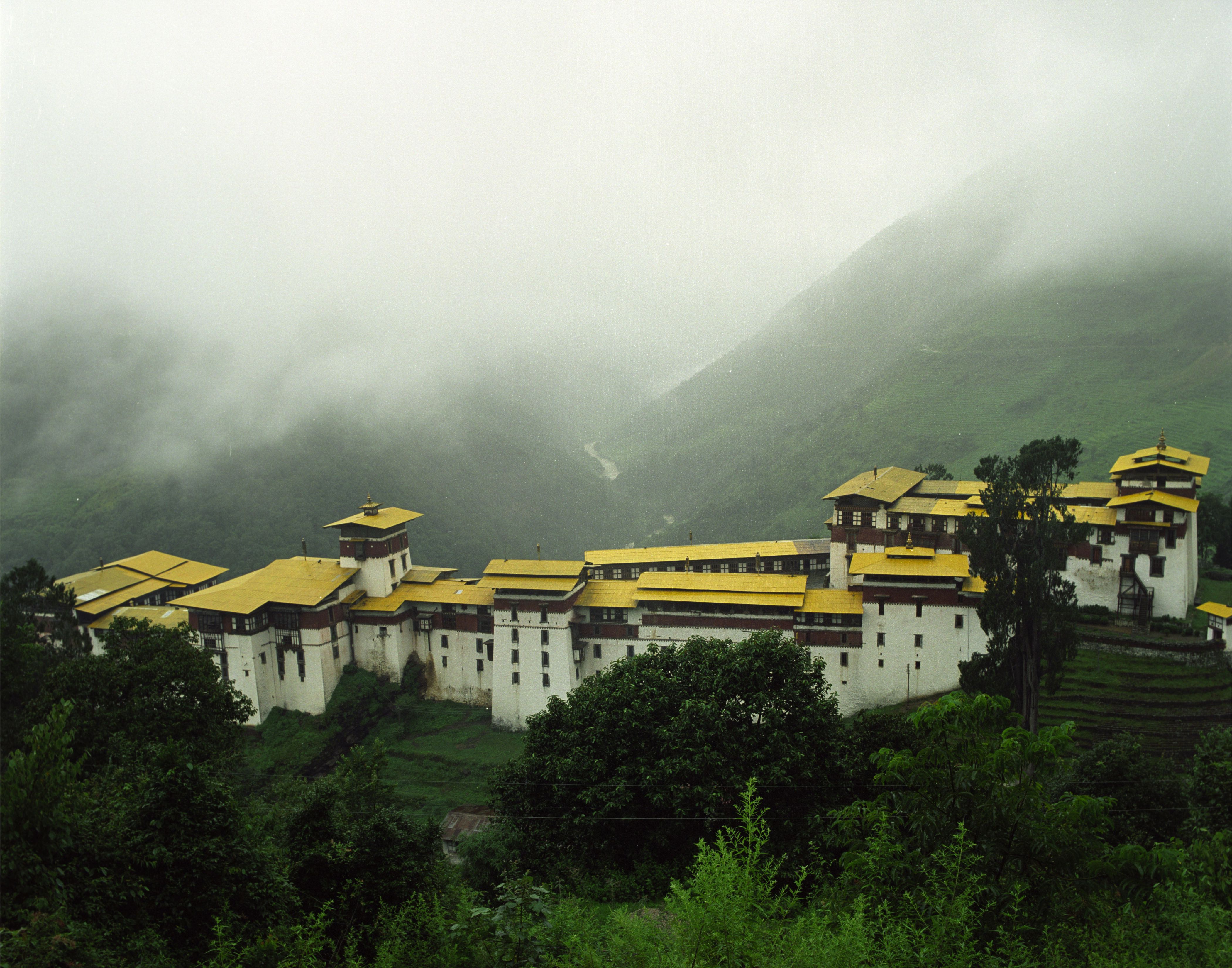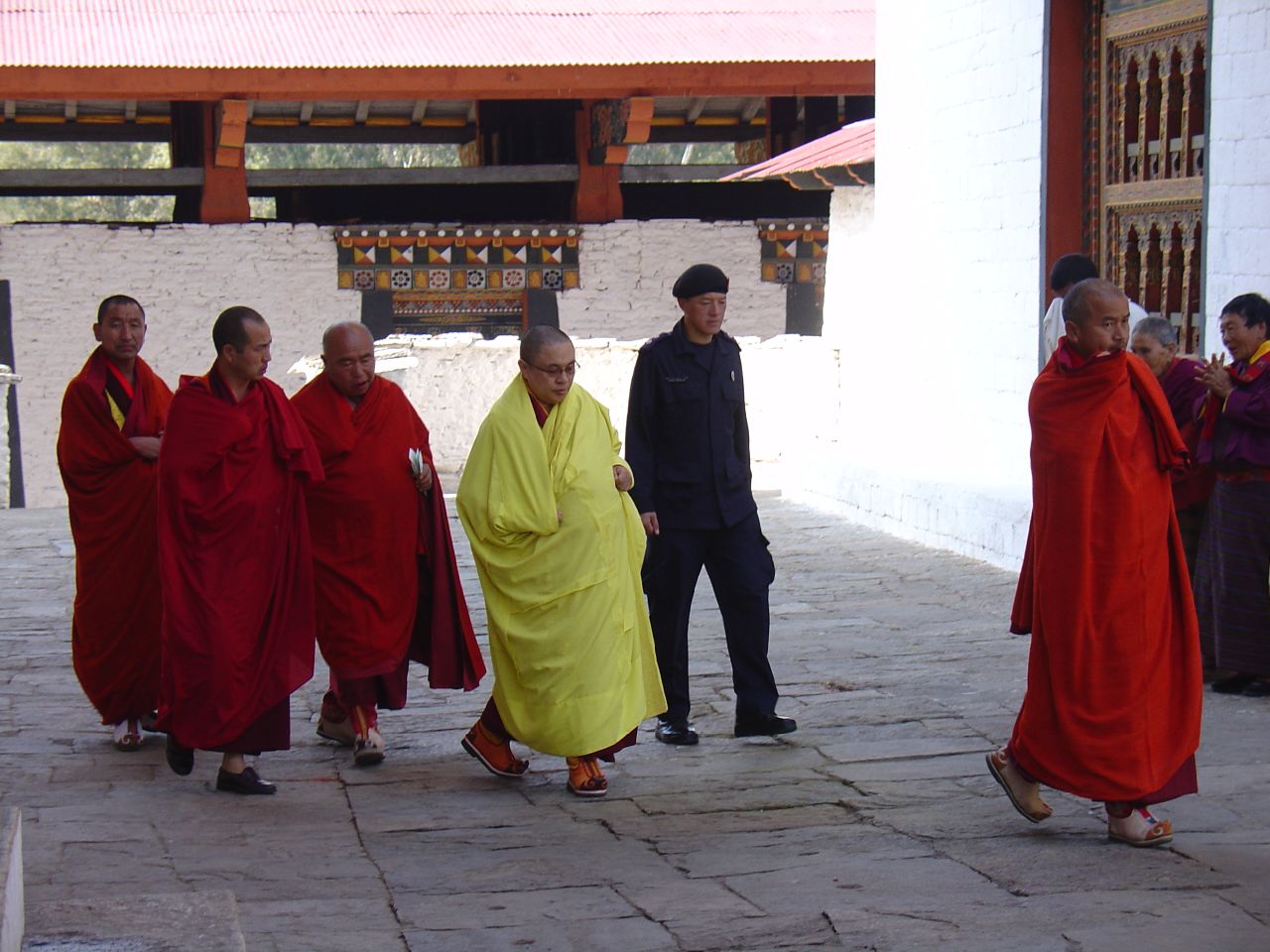|
Penlops
Penlop (Dzongkha: དཔོན་སློབ་; Wylie: ''dpon-slob''; also spelled Ponlop, Pönlop) is a Dzongkha term roughly translated as provincial governor. Bhutanese penlops, prior to unification, controlled certain districts of the country, but now hold no administrative office. Rather, penlops are now entirely subservient to the House of Wangchuck. Traditionally, Bhutan comprised nine provinces: Trongsa, Paro, Punakha, Wangdue Phodrang, Daga (also Taka, Tarka, or Taga), Bumthang, Thimphu, Kurtoed (also Kurtoi, Kuru-tod), and Kurmaed (or Kurme, Kuru-mad). The Provinces of Kurtoed and Kurmaed were combined into one local administration, leaving the traditional number of governors at eight. While some lords were penlops, others held the title Dzongpen (Dzongkha: རྗོང་དཔོན་; Wylie: ''rjong-dpon''; also "Jongpen," "Dzongpön"), a title also translated as "governor." Other historical titles, such as "Governor of Haa," were also awarded. Under the dua ... [...More Info...] [...Related Items...] OR: [Wikipedia] [Google] [Baidu] |
Penlop Of Trongsa
The Penlop of Trongsa (; ), also called Chhoetse Penlop (Dzongkha: ཆོས་རྩེ་དཔོན་སློབ་; Wylie: ''Chos-rtse dpon-slob''; also spelled "Chötse"),The spelling of this title varies widely in sources because transliterations of Tibetan script and transcriptions of Tibetan phonology differ. ''Penlop'' may be spelled "pönlop" or "ponlop". ''Trongsa'' may appear as "Tongsa" or even "(b)Krongsa". ''Chotse'' may alternatively appear as "Chhotse", "Ch(h)oetse" or "Ch(h)ötse". Any combination of these variations may also contain additional hyphens or differing capitalization. is a Dzongkha title meaning "Governor of the Province of Trongsa (Chhoetse)". It is now generally given to the heir apparent of the Kingdom of Bhutan, but historically was an important title, for the governor of Trongsa and the surrounding area, and was the route by which the House of Wangchuck came to the throne. The most recent holder of the title was King Jigme Khesar Namgyel ... [...More Info...] [...Related Items...] OR: [Wikipedia] [Google] [Baidu] |
Dzongpen
Dzongpen (Dzongkha: རྗོང་དཔོན་; Wylie: ''rjong-dpon''; also spelled "Dzongpon," "Dzongpön," "Jongpen," "Jongpon," "Jongpön") is a Dzongkha term roughly translated as governor or dzong lord. Bhutanese dzongpens, prior to unification, controlled certain areas of the country, but now hold no administrative office. Rather, dzongpens are now entirely subservient to the House of Wangchuck. Traditionally, Bhutan comprised nine provinces: Trongsa, Paro, Punakha, Wangdue Phodrang, Daga (also Taka, Tarka, or Taga), Bumthang, Thimphu, Kurtoed (also Kurtoi, Kuru-tod), and Kurmaed (or Kurme, Kuru-mad). The Provinces of Kurtoed and Kurmaed were combined into one local administration, leaving the traditional number of governors at eight. While some lords ruled from dzongs (dzongpens), others held the title of penlop (Dzongkha: དཔོན་སློབ་; Wylie: ''dpon-slob''; also "Ponlop"), a title also translated as "governor," though penlops tended to be mo ... [...More Info...] [...Related Items...] OR: [Wikipedia] [Google] [Baidu] |
Dzongkha
Dzongkha (; ) is a Tibeto-Burman languages, Tibeto-Burman language that is the official and national language of Bhutan. It is written using the Tibetan script. The word means "the language of the fortress", from ' "fortress" and ' "language". , Dzongkha had 171,080 native speakers and about 640,000 total speakers. Dzongkha is a Tibetic languages, South Tibetic language. It is closely related to Laya dialect, Laya and Lunana dialect, Lunana and partially intelligible with Sikkimese language, Sikkimese, and to some other Bhutanese languages such as Chocangaca language, Chocha Ngacha, Brokpa language, Brokpa, Brokkat language, Brokkat and Lakha language, Lakha. It has a more distant relationship to Standard Tibetan. Spoken Dzongkha and Tibetan are around 50 to 80 percent Mutual intelligibility, mutually intelligible. Classification Dzongkha is considered a Tibetic languages, South Tibetic language. It is closely related to and partially intelligible with Sikkimese language, ... [...More Info...] [...Related Items...] OR: [Wikipedia] [Google] [Baidu] |
Ngawang Namgyal
Ngawang Namgyal (; alternate spellings include ''Zhabdrung Ngawang Namgyel;'' 1594–1651), known colloquially as ''The Bearded Lama'', was a Tibetan Buddhist Drukpa Kagyu school Rinpoche, and the unifier of Bhutan as a nation-state. He was later granted the honorific title Zhabdrung Rinpoche, approximately "at whose feet one submits". In addition to unifying the various warring fiefdoms for the first time in the 1630s, he also sought to create a distinct Bhutanese cultural identity separate from the Tibetan culture from which it was derived. Birth and enthronement at Ralung ''Zhabdrung'' Ngawang Namgyal was born at Ralung () Monastery, Tibet as the son of the Drukpa Kagyu lineage-holder Mipham Tenpa'i Nyima (, 1567–1619), and Sönam Pelgyi Butri (), daughter of the local king of Kyishö () in Tibet. On his father's side, Ngawang Namgyal descended from the family line of Tsangpa Gyare (1161–1211), the founder of the Drukpa Lineage. In his youth, Ngawang Namgyal was en ... [...More Info...] [...Related Items...] OR: [Wikipedia] [Google] [Baidu] |
Je Khenpo
The Je Khenpo (; "The Chief Abbot of the Central Monastic Body of Bhutan"), formerly called the ''Dharma Raja'' by orientalists, is the title given to the senior religious hierarch of Bhutan. His primary duty is to lead the Dratshang Lhentshog (Commission for the Monastic Affairs) of Bhutan, which oversees the Central Monastic Body, and to arbitrate on matters of doctrine, assisted by ''Five Lopen Rinpoches '' (learned masters). The Je Khenpo is also responsible for many important liturgical and religious duties nationwide. The sitting Je Khenpo is also formally the leader of the southern branch of the Drukpa Kagyu sect, which is part of the Kagyu tradition of Tibetan Buddhism. Aside from the King of Bhutan, only the Je Khenpo may don a saffron kabney. History According to the dual system of government established by Ngawang Namgyal in the 17th century, the powers of the government of Bhutan were ideally split between the religious branch, headed by the Je Khenpo, and ... [...More Info...] [...Related Items...] OR: [Wikipedia] [Google] [Baidu] |
Heir Apparent
An heir apparent is a person who is first in the order of succession and cannot be displaced from inheriting by the birth of another person. A person who is first in the current order of succession but could be displaced by the birth of a more eligible heir is known as an heir presumptive. Today these terms most commonly describe heirs to hereditary titles (e.g. titles of nobility) or offices, especially when only inheritable by a single person. Most monarchies refer to the heir apparent of their thrones with the descriptive term of ''crown prince'' or ''crown princess'', but they may also be accorded with a more specific substantive title: such as Prince of Orange in the Netherlands, Duke of Brabant in Belgium, Prince of Asturias in Spain (also granted to heirs presumptive), or the Prince of Wales in England and Wales; former titles include Dauphin in the Kingdom of France, and Tsesarevich in Imperial Russia. The term is also applied metaphorically to an expected succe ... [...More Info...] [...Related Items...] OR: [Wikipedia] [Google] [Baidu] |
King Of Bhutan
The King of Bhutan, officially the Druk Gyalpo (; ), is the constitutional monarch and head of state of the Kingdom of Bhutan. In the Dzongkha language, Bhutan is known as ''Drukyul'' which translates as "The Land of the Thunder Dragon". Thus, while kings of Bhutan are known as ''Druk Gyalpo'' ("Dragon King"), the Bhutanese people call themselves the ''Drukpa'', meaning "people of Druk (Bhutan)". The current sovereign of Bhutan is Jigme Khesar Namgyel Wangchuck, the fifth ''Druk Gyalpo''. He wears the Raven Crown, which is the official crown worn by the kings of Bhutan. He is correctly styled "''Mi'wang 'Ngada Rinpoche''" ("His Majesty") and addressed "''Ngada Rimboche''" ("Your Majesty"). King Jigme Khesar was the youngest reigning monarch in the world, being 26 years old when he ascended the throne on 9 December 2006 after his father, Jigme Singye Wangchuck, abdicated the throne in his favour. He was 28 years old when he was crowned on 6 November 2008. Duties and ... [...More Info...] [...Related Items...] OR: [Wikipedia] [Google] [Baidu] |
Tibet
Tibet (; ''Böd''; ), or Greater Tibet, is a region in the western part of East Asia, covering much of the Tibetan Plateau and spanning about . It is the homeland of the Tibetan people. Also resident on the plateau are other ethnic groups such as Mongols, Monpa people, Monpa, Tamang people, Tamang, Qiang people, Qiang, Sherpa people, Sherpa, Lhoba people, Lhoba, and since the 20th century Han Chinese and Hui people, Hui. Tibet is the highest region on Earth, with an average elevation of . Located in the Himalayas, the highest elevation in Tibet is Mount Everest, Earth's highest mountain, rising above sea level. The Tibetan Empire emerged in the 7th century. At its height in the 9th century, the Tibetan Empire extended far beyond the Tibetan Plateau, from the Tarim Basin and Pamirs in the west, to Yunnan and Bengal in the southeast. It then divided into a variety of territories. The bulk of western and central Tibet (Ü-Tsang) was often at least nominally unified under a ser ... [...More Info...] [...Related Items...] OR: [Wikipedia] [Google] [Baidu] |
Mongol Empire
The Mongol Empire was the List of largest empires, largest contiguous empire in human history, history. Originating in present-day Mongolia in East Asia, the Mongol Empire at its height stretched from the Sea of Japan to parts of Eastern Europe, extending northward into parts of the Arctic; eastward and southward into parts of the Indian subcontinent, mounting invasions of Southeast Asia, and conquering the Iranian plateau; and reaching westward as far as the Levant and the Carpathian Mountains. The Mongol Empire emerged from the unification of several nomad, nomadic tribes in the Mongol heartland under the leadership of Temüjin, known by the title of Genghis Khan (–1227), whom a council proclaimed as the ruler of all Mongols in 1206. The empire grew rapidly under his rule and that of his descendants, who sent out Mongol invasions, invading armies in every direction. The vast transcontinental empire connected the Eastern world, East with the Western world, West, and the Pac ... [...More Info...] [...Related Items...] OR: [Wikipedia] [Google] [Baidu] |
Trongsa
Trongsa, previously Tongsa (, ), is a Thromde or town, and the capital of Trongsa District in central Bhutan. The name means "new village" in Dzongkha. The first temple was built in 1543 by the Drukpa lama Ngagi Wangchuck, who was the great-grandfather of Ngawang Namgyal, Zhabdrung Rinpoche, the unifier of Bhutan. Trongsa Dzong Chökhor Raptentse Dzong at Trongsa which was built in 1644, used to be the seat of power of the Wangchuck dynasty before it became rulers of Bhutan in 1907. Traditionally the King of Bhutan first becomes the Trongsa Penlop (governor) before being named Crown Prince and eventually King. Built on a mountain spur high above the gorges of the Mangde Chhu, the dzong controlled east-west trade for centuries. The only road connecting eastern and western Bhutan (the precursor to the modern Lateral Road), passed through the courtyard of the dzong. At the command of the ''penlop'' the massive doors could be shut, dividing the country in two. Higher ... [...More Info...] [...Related Items...] OR: [Wikipedia] [Google] [Baidu] |





